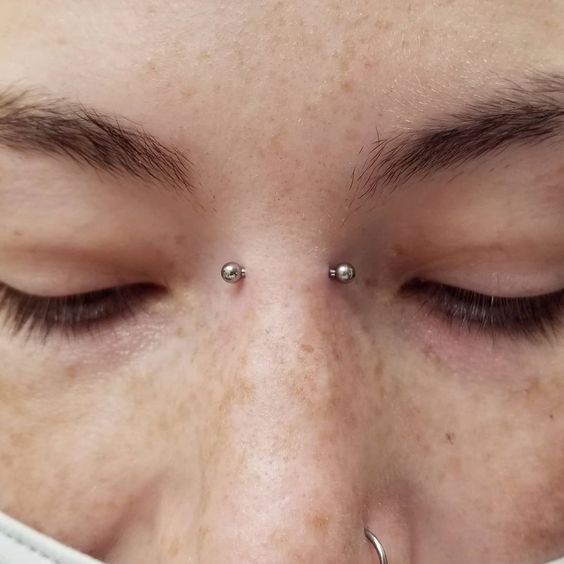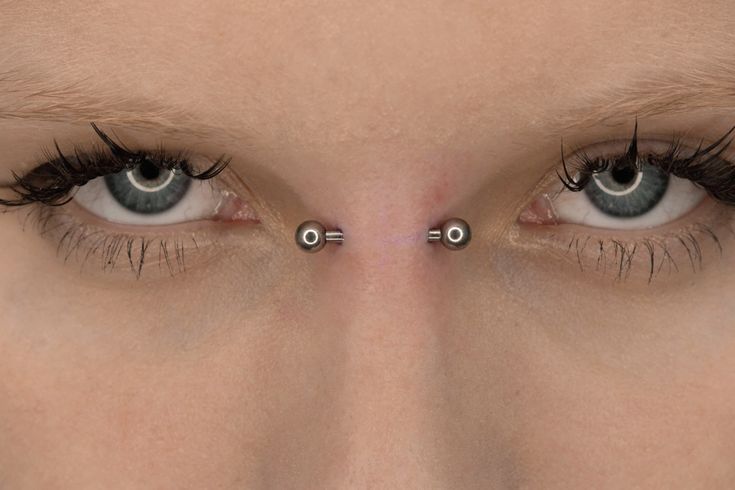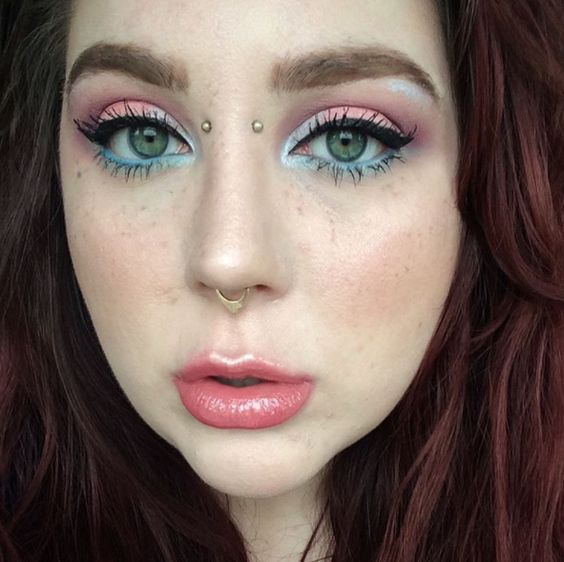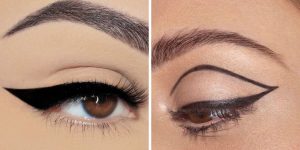Bridge Piercing: 7 Essential Tips for Styling and Caring
A bridge piercing, also known as an “Erl,” is a bold and unique choice for those seeking a distinctive look. This piercing sits horizontally across the bridge of the nose, between the eyes, adding a modern and minimalistic touch.
In this guide, we’ll cover the main aspects to consider before and after getting a bridge piercing, from pain level to healing tips, as well as advice on jewelry styling.
1. Pain Level bridge piercing: What to Expect?

The pain associated with a bridge piercing is subjective and varies from person to person. On average, it’s considered moderate, around 7 on a scale of 1 to 10.
Since it passes through soft tissue, rather than cartilage or nerve-dense areas, the discomfort is quick and tolerable. Many people find the “pinch and pressure” sensation to be less intense than cartilage piercings, such as ear piercings.
2. Healing Time
The healing period for a bridge piercing typically ranges from 8 to 10 weeks but may extend up to 3 months for complete healing.
During this time, it’s crucial to keep the area clean and avoid changing the jewelry too soon. The inner tissue may take even longer to fully heal, which means the entire process can last up to 8 months.
3. Cost: How Much Should You Invest?

The cost of a bridge piercing varies from $30 to $60, depending on the studio and professional. Investing in a reputable piercer is vital to avoid complications.
Initial jewelry should be made of hypoallergenic materials, such as titanium or surgical-grade stainless steel, to reduce the risk of rejection or infection. The right choice of jewelry is key for a smooth healing process.
4. Aftercare Essentials (Piercing Care)
Cleaning is the cornerstone of bridge piercing care. Use a saline solution twice a day to prevent infections.
Avoid harsh products like alcohol, peroxide, or makeup around the area. Additionally, refrain from touching, twisting, or moving the jewelry during healing, as this can prolong the process and cause irritation or even infections.
5. Risks and Side Effects

As with any piercing, a bridge piercing can come with side effects. Swelling and tenderness are common immediately after the procedure, typically subsiding within a few weeks.
Allergic reactions may occur if unsuitable metals are used, making hypoallergenic materials like titanium or stainless steel essential.
In some cases, the body may reject the piercing, leading to scarring or keloids, especially if the jewelry is improperly fitted or frequently handled.
6. Bridge Piercing and Glasses
If you wear glasses, their position and fit are important to avoid interfering with the piercing during healing.
Wearing contact lenses can be a temporary solution. Alternatively, adjust your glasses so they sit lower on your nose and don’t touch the pierced area.
Once healed, lightweight and properly adjusted glasses are recommended for comfort and to prevent irritation.
7. Style and Jewelry Types (Bridge Jewelry)

Selecting the right jewelry is a crucial part of having a bridge piercing. Curved barbells are the most suitable choice as they fit well along the bridge of the nose, reducing the risk of migration.
For the initial piercing, it’s important to follow your piercer’s recommendations for the size and type of metal.
Jewelry made from titanium, stainless steel, or high-quality gold (14k or higher) is ideal for ensuring smooth healing and safe, stylish wear.





